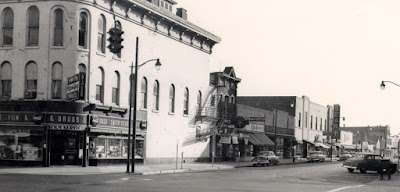Several pictures taken at the Follett House when Sandusky High School
held Home Economics classes there are now in the historical photograph
collection of the Sandusky Library Archives Research Center. Home Economics classes were held at the
Follett House from the late 1930s through the mid 1950s. Courses included
sewing, cooking, child care, and general household management.
An article in the Sandusky Star Journal of February 20,
1941 stated that the students would be learning how to do laundry, house
cleaning, and serve meals in an environment that closely resembled an actual
home setting. This was easy to achieve at the Follett House, since it had
actually been a family home for many years.
Besides learning during classroom
time, the students also participated in fun activities like style shows, teas,
and taffy pulls. During World War II, a class was held for male students. The Sandusky Register Star News of December 4, 1942 reported that the young men
would report to the basement of the Follett House, where they were instructed
in how to launder the towels, napkins and tablecloths that were used in the
Home Economics cooking classes. This class was intended to help the young men
help at home with their own family’s chores, since so many mothers of school
aged students had gone to work in defense plants. Another wartime activity of
the Home Economics students was the sewing of clothing for the Red Cross. Each garment that was to be sent overseas had a tag that read
“American Junior Red Cross Erie County.”
Did you have family who attended classes at the Follett House?

 this blog
this blog











































